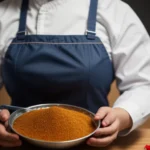The rich history of Turkey is reflected in its traditional dishes, which have been passed down through generations and are an integral part of the country’s culture. These dishes are not just delicious, but they also tell a fascinating story of Turkey’s culinary evolution over the centuries. In this article, we will delve into the history behind some of the most beloved Turkish dishes and explore the cultural significance of each one.
1. Introduction to Turkish Cuisine
Turkish cuisine is a diverse and flavorful mix of influences from the Middle East, Central Asia, and the Mediterranean. It is characterized by fresh ingredients, bold flavors, and a wide variety of spices. The use of olive oil, yogurt, and fresh herbs is common in Turkish cooking, as is the use of grains like bulgur and rice.
2. Kebabs: A Staple of Turkish Cuisine
One of the most iconic Turkish dishes is kebab, which consists of grilled or roasted meat, typically served with vegetables, rice, or bread. Kebabs have a long history in Turkey and are believed to have originated in the Middle East. They are often seasoned with a mix of spices and cooked over an open flame for a smoky flavor.
3. Baklava: A Sweet Treat with a Long History
Baklava is a rich and decadent dessert made with layers of phyllo dough, nuts, and honey. It is a popular treat in Turkey and is often served during special occasions like weddings and holidays. The origins of baklava can be traced back to the Ottoman Empire, where it was first made in the imperial kitchens.
4. Dolma: A Flavorful Stuffed Dish
Dolma is a dish made with vegetables like grape leaves, peppers, and tomatoes, stuffed with a savory mixture of rice, herbs, and spices. It is a popular appetizer in Turkish cuisine and is often served as part of a meze spread. The word “dolma” means “stuffed” in Turkish, and the dish has its roots in the Ottoman Empire.
5. Pide: Turkish Flatbread with a Twist
Pide is a type of Turkish flatbread that is traditionally served with a variety of toppings like cheese, meat, or vegetables. It is similar to pizza but has a unique shape, typically oval or boat-shaped. Pide has been a staple in Turkish cuisine for centuries and is often enjoyed as a quick and satisfying meal.
6. Menemen: A Hearty Breakfast Dish
Menemen is a popular Turkish breakfast dish made with eggs, tomatoes, peppers, and spices. It is often served with bread or Turkish tea and is a favorite among locals and visitors alike. Menemen is a simple but flavorful dish that showcases the fresh ingredients and bold flavors of Turkish cuisine.
7. Manti: A Traditional Dumpling Dish
Manti is a traditional Turkish dish made with small dumplings filled with meat, onions, and spices, topped with yogurt and garlic sauce. It is a labor-intensive dish that is often prepared for special occasions and is a beloved comfort food in Turkey. Manti has its roots in Central Asian cuisine and has been adapted and evolved over the centuries.

8. Lahmacun: Turkish Flatbread with a Spicy Twist
Lahmacun is a type of Turkish flatbread topped with a spicy mixture of minced meat, onions, and herbs. It is often served with fresh vegetables and lemon juice for a burst of flavor. Lahmacun is a popular street food in Turkey and is enjoyed by locals and tourists alike.
9. Simit: A Classic Turkish Street Food
Simit is a circular bread covered in sesame seeds, often enjoyed as a quick snack or breakfast item in Turkey. It is similar to a bagel but has a lighter texture and a slightly sweet flavor. Simit has been a staple in Turkish cuisine for centuries and is often sold by street vendors across the country.
10. Turkish Coffee: A National Beverage
Turkish coffee is a strong and aromatic coffee brewed using finely ground beans and served in a small cup. It is a national beverage in Turkey and is often enjoyed with a side of Turkish delight or baklava. Turkish coffee has a long history in the country and is considered an integral part of Turkish culture.
11. Iskender Kebab: A Modern Twist on a Classic Dish
Iskender kebab is a modern interpretation of the traditional Turkish kebab, featuring thinly sliced grilled meat served over pide bread with tomato sauce and yogurt. It is a popular dish in Turkey and is often enjoyed as a hearty and satisfying meal. Iskender kebab has become a favorite among locals and visitors alike, showcasing the culinary creativity of Turkish chefs.
12. Künefe: A Unique and Delicious Dessert
Künefe is a sweet and sticky dessert made with shredded phyllo dough, cheese, and syrup. It is often served warm and topped with crushed pistachios for a crunchy texture. Künefe has its origins in the Middle East and has been adapted and popularized in Turkey, where it is enjoyed as a special treat.
13. Meze: A Flavorful Appetizer Spread
Meze is a selection of small dishes served as appetizers or snacks in Turkish cuisine. It typically includes a variety of salads, dips, cheeses, and seafood, all meant to be shared and enjoyed with friends and family. Meze is a staple in Turkish dining and is often served alongside kebabs or other main dishes.
14. Piyaz: A Hearty Bean Salad
Piyaz is a traditional Turkish bean salad made with boiled white beans, onions, parsley, and a tangy vinaigrette dressing. It is often served as a side dish or appetizer and is enjoyed for its fresh flavors and hearty texture. Piyaz has been a popular dish in Turkey for centuries and is a favorite among locals and visitors alike.
15. Conclusion: A Culinary Journey Through Turkish Cuisine
Turkish cuisine is a treasure trove of flavors, textures, and aromas that reflect the country’s diverse history and cultural influences. From kebabs to baklava, Turkish dishes tell a story of tradition, innovation, and creativity that has been passed down through generations. Exploring the fascinating history behind these dishes offers a deeper appreciation for the culinary heritage of Turkey and the delicious flavors that continue to delight food lovers around the world.
FAQs about “The Fascinating History Behind Traditional Turkish Dishes”
- What makes “The Fascinating History Behind Traditional Turkish Dishes” a captivating exploration of Turkish cuisine? This book delves into the rich history and cultural heritage behind traditional Turkish dishes, offering readers a deeper understanding of the culinary traditions and influences that have shaped Turkish cuisine over the centuries.
- Which aspects of Turkish cuisine’s history are covered in this book? “The Fascinating History Behind Traditional Turkish Dishes” covers various aspects of Turkish cuisine’s history, including the influences of Ottoman, Byzantine, Persian, Arab, and Mediterranean cultures, as well as the evolution of regional specialties and cooking techniques.
- Are specific Turkish dishes featured in this culinary exploration? Yes, this book features a curated selection of traditional Turkish dishes that exemplify the country’s culinary heritage. From kebabs and mezes to pilafs and desserts like baklava, readers will discover the fascinating stories behind these iconic dishes.
- How does this book shed light on the cultural significance of Turkish cuisine? This book sheds light on the cultural significance of Turkish cuisine by exploring its role in Turkish society, from everyday meals to festive celebrations and special occasions. It highlights the importance of food in Turkish culture as a symbol of hospitality, identity, and social cohesion.
- Can readers expect to gain insights into the historical context and influences behind Turkish dishes from this book? Absolutely! “The Fascinating History Behind Traditional Turkish Dishes” provides readers with insights into the historical context, cultural influences, and culinary innovations that have contributed to the development of Turkish cuisine. Whether you’re a food enthusiast or a history buff, this book offers a fascinating journey through the flavors and stories of Turkey’s culinary heritage.
Advantages:
- Intriguing Language: The title “The Fascinating History Behind Traditional Turkish Dishes” immediately captivates the reader’s attention by promising insights into the historical context of Turkish cuisine, arousing curiosity.
- Cultural Exploration: By delving into the history of traditional Turkish dishes, the title encourages readers to explore the rich cultural heritage of Turkey, fostering a deeper appreciation for its culinary traditions.
- Historical Insight: Readers can expect to gain a comprehensive understanding of the cultural, social, and historical factors that have influenced the development of traditional Turkish dishes, enriching their knowledge of Turkish cuisine.
- Educational Value: The title offers educational value by providing insights into the historical significance and cultural significance of traditional Turkish dishes, enhancing readers’ understanding of Turkish culinary heritage.
- Inspiration for Cooking: The title may inspire readers to recreate traditional Turkish dishes in their own kitchens, encouraging culinary exploration and appreciation of Turkish gastronomy.
Disadvantages:
- Potential Oversimplification: While the title promises insights into the history of Turkish dishes, it may oversimplify the complexity of Turkish culinary traditions and overlook regional variations within Turkey.
- Cultural Misrepresentation: Without careful analysis and context, focusing solely on the history of Turkish dishes could lead to misinterpretation or stereotyping of Turkish cuisine, overlooking its diversity and richness.
- Historical Accuracy: The title may not fully capture the nuances and intricacies of the historical context behind traditional Turkish dishes, potentially presenting a simplified or incomplete narrative.
- Limited Scope: The title may not cover every aspect of the history of Turkish cuisine in depth, potentially leaving out certain dishes or culinary traditions that could provide a more comprehensive understanding.
- Audience Engagement: While the title appeals to readers interested in history and culinary traditions, it may not attract those seeking practical cooking tips or recipes, limiting its audience appeal.
















